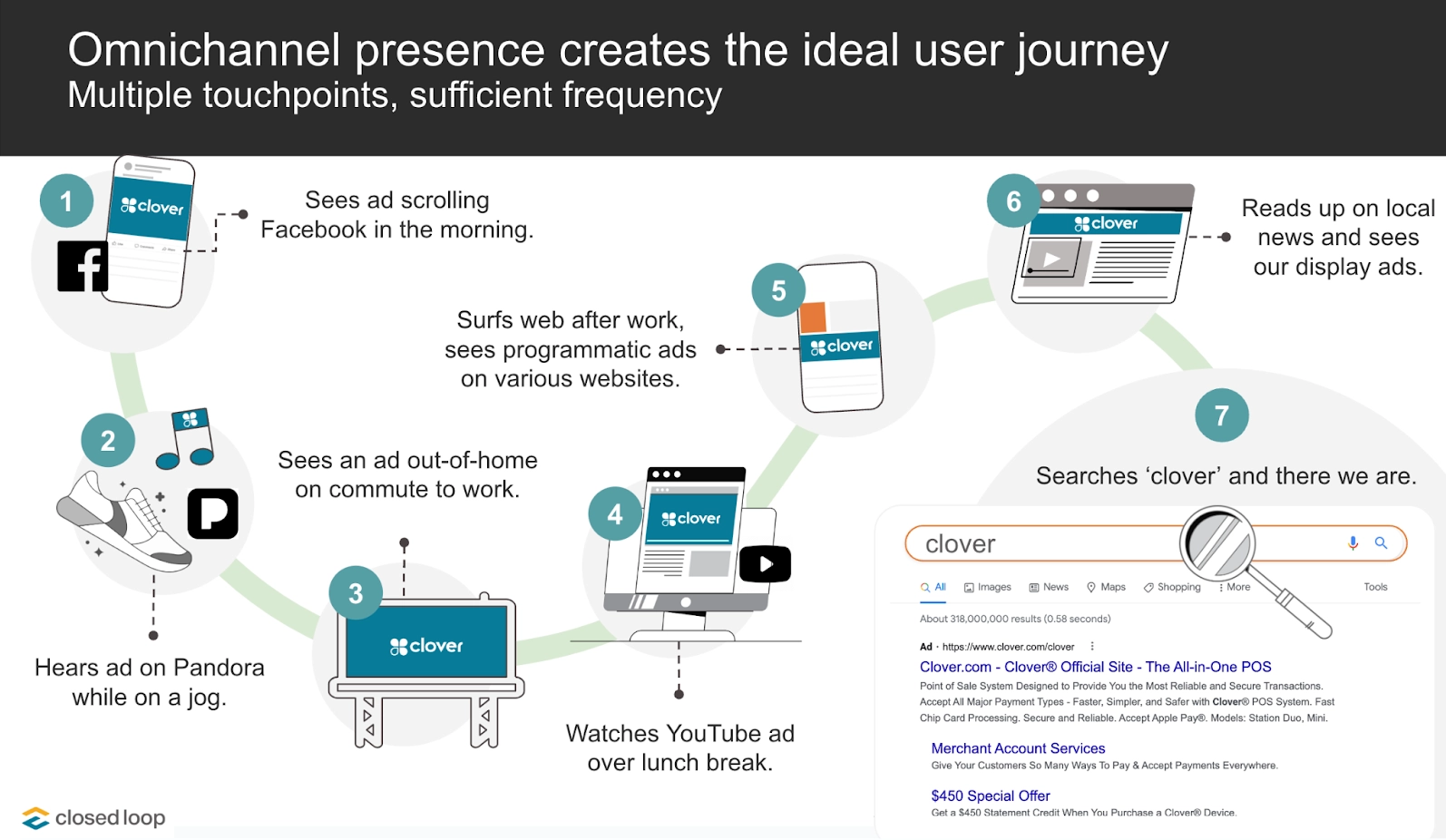
Google Marketing Live 2025: 4 Trends Advertisers Must Know
Google is doubling down on AI-first advertising strategies in 2025. Here are the four trends from Google Marketing Live that advertisers must act on.

Image source
As a seasoned digital marketer, there’s a good chance your career started in the world of direct response. You can rattle off your business key performance indicators (KPIs) with ease and confidence. Sales, cost per acquisition, leads, cost per lead and return on ad spend (ROAS) are your jam. Direct response is in your blood.
But in the past 5 to 10 years, your career has likely evolved. You’ve become a jack of many trades, diving into new channels beyond search alone. Now you manage social, display, video, audio and more.
Managing top of funnel marketing requires such a massive mindset shift. As advertisers, we can’t plan or measure any of these channels through a direct response lens. Instead, we’re playing higher up in the funnel, planting the awareness seeds today so we can harvest the direct response of the future.
Not only do we need to reorient ourselves to a whole new set of KPIs and ways of thinking, we also need to do the same for our colleagues and stakeholders. How often do you hear stakeholders want to focus on awareness—but in the end they still ask, “So how many leads/sales did it drive and what was the ROI?”
More often than not, this question is impossible to answer. While top of funnel marketing most definitely does drive future leads and sales, conversions aren’t an immediate, measurable goal. We must adjust our lens.
In this article, we’ll discuss how we can orient our minds around top of funnel campaigns so we feel confident in speaking to the results. Then we can assure our stakeholders we’re investing money in the future when we plant awareness seeds today.
With straight direct response tactics, your advertising portfolio can likely rest its laurels on a few key channels. Along with search, you may focus on Facebook, LinkedIn and another key channel or two.
However, with top of funnel advertising, you must have a “Be Everywhere” mindset to make a strong impact. You need users to encounter your brand multiple times, via multiple touchpoints throughout their day or week.
It requires an omnichannel media strategy that encompasses many channels across social, display, audio and video. They all work together to create the ideal user journey that drives increased recall, brand favorability and purchase intent.
Omnichannel presence is essential because prospects don’t discover brands via search alone. Search just happens to be where advertisers harvest that discovery.

You can’t propose marriage on the first date. Nor can you push a hard sell of your product on the first click.
With this in mind, your mindset for top of funnel advertising should be to educate, not to sell. Your content should make the target audience feel like you’re serving them, not selling to them (even though *wink, wink* we are aiming to sell in the long run).
Campaigns should center around landing pages that are informative, with softer calls to action. We should promote industry reports, whitepapers, ebooks and product guides. The content we put in prospects’ hands should discuss the industry and ultimately educate prospects, planting the seed that your brand is the best solution in the industry.
If you covertly soft-sell to prospective future buyers by making them feel like you’re the brand helping them on their buyer’s journey, you’ll remain top-of-mind. You’ll also arm them with the information they need to eventually make their purchase decision. And hopefully that decision is that your brand is, in fact, the solution they need.
Top of funnel marketing requires a distinct set of measurement principles to prove success. There are two key components:
Think of a micro conversion strategy as the guardrails we put in place to make sure that the impressions and traffic we drive are high-quality and will have an impact on future sales.
This approach allows us to tap into the performance marketing mindset we gained from direct response into our top of funnel strategy. It has a softer lens that isn’t measuring leads and sales, but rather the events that contribute to future leads and sales.
So what is a micro conversion? Micro conversions are the baby steps a prospect takes on your website that reflect strong interest and potential purchase intent. Some examples include:
These micro conversions, along with qualitative engagement metrics like time on site and page views per visitor, can give you a sense of which top of funnel channels are driving high-quality engaged visitors.
An effective top-of-funnel measurement strategy must also adopt a system-wide view of sales and leads, instead of the traditional more siloed view we use in direct response. In this case, “system” means measuring total leads/sales lift across paid and unpaid channels across your entire business—not just directly attributed leads/sales.
Taking a system-wide view is key, as often the measurable lift from a big top of funnel push isn’t directly attributed to the individual top of funnel channels. Instead the lift often appears in unpaid/unattributed channels (i.e., direct, organic and paid brand).
If you ignored the system-wide view by only monitoring paid conversions and ROAS, you could miss the big picture entirely. You may not realize that top of funnel efforts drove an increase in business across the board.
Finally, you need to enter into top of funnel marketing with the mindset that it isn’t a one-time, short-term foray into awareness. Instead, it needs to be a sustained part of your ongoing advertising portfolio.
Top of funnel advertising should be an ongoing evergreen component of your marketing program, at an ideal investment of 15 to 20% of your advertising budget.
Set expectations for yourself and your stakeholders with the following timeline:
So, my direct response champions, while top of funnel may not be where you originated, you can make this mindset shift. Stay the course. System lift from top of funnel campaigns doesn’t happen overnight.
But you can achieve it if you remain steadfast in maintaining a well-planned omnichannel presence that truly aims to service and educate future buyers, measured and optimized against a micro conversion strategy and system-wide view, at a sustained investment in your brand at 15 to 20% of your marketing budget.

Google is doubling down on AI-first advertising strategies in 2025. Here are the four trends from Google Marketing Live that advertisers must act on.

Closed Loop and Clover earned three Silver Telly Awards for the “Behind the Business” campaign, celebrating standout creative across CTV and digital.

Learn how leading CMOs are reframing marketing to speak the CFO’s language, drive predictable outcomes, and secure their budgets in 2025 and beyond.